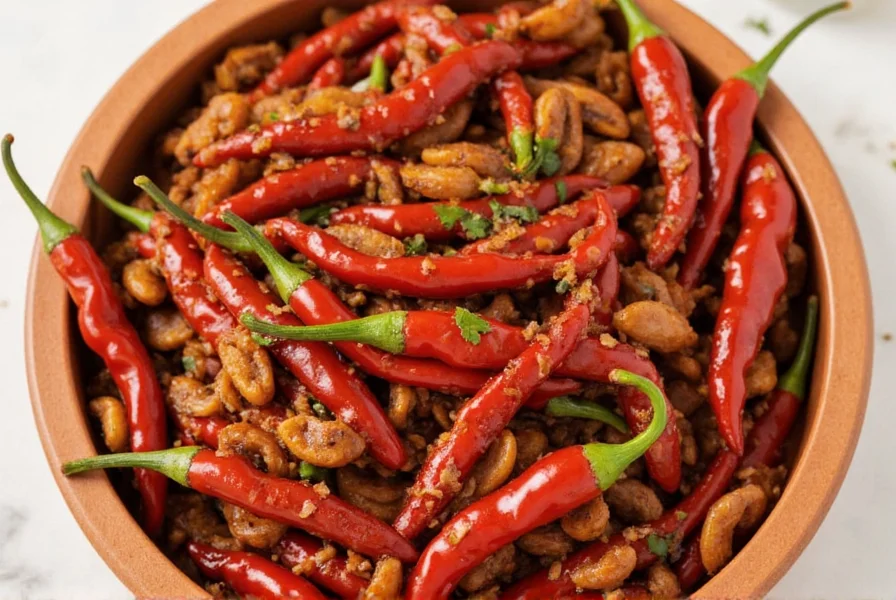| Substitute | Heat Level | Smokiness | Substitution Ratio | Best For |
|---|---|---|---|---|
| Ancho Chile Paste + Smoke | Mild | Medium | 1 tbsp paste + 1/4 tsp smoked paprika per chipotle | Slow-cooked dishes, sauces, desserts |
| Dried Chipotle Powder | Moderate-High | High | 1/2 tsp powder per chipotle | Rubs, marinades, soups |
| Canned Crushed Tomatoes + Smoked Paprika | Mild-Medium | Medium | 2 tbsp tomatoes + 1/4 tsp smoked paprika per chipotle | Stews, taco fillings, pasta sauces |
| Pasilla Negro Chile Paste | Mild-Moderate | Medium | 1 tbsp paste per chipotle | Moles, braises, complex sauces |
| Harissa Paste | High | Medium | 1 tbsp paste per chipotle (reduce for milder heat) | Grilled meats, African-inspired dishes |
| Guajillo Chile Paste | Mild-Moderate | Low | 1 tbsp paste per chipotle | Light salsas, seafood, dressings |
| Sriracha + Smoked Paprika | Moderate-High | Medium | 1 tbsp sriracha + 1/4 tsp smoked paprika per chipotle | Condiments, sandwiches, instant noodles |
Quick Fix: Top 7 Chipotle Substitutes for Any Recipe
Need chipotle chile in adobo but don't have it? These 7 proven substitutes deliver authentic smoky heat with exact measurements for perfect results every time. Whether you're making tacos, BBQ sauce, or mole, we've got you covered.
What Is Chipotle Chile in Adobo?
Chipotle chiles in adobo are smoked, dried jalapeños canned in a tangy red sauce. They provide 2,500-8,000 Scoville units of moderate heat with deep, earthy smoke - essential for authentic Mexican flavors. When substituting, focus on replicating both heat and smokiness.
Top 7 Chipotle Substitutes With Exact Measurements
1. Ancho Chile Paste + Smoke (Mild & Sweet)
Use: 1 tablespoon ancho paste + 1/4 teaspoon smoked paprika per chipotle pepper. Add 1/2 teaspoon vinegar for tang.
Perfect for slow-cooked dishes where you want rich sweetness without overwhelming heat. Ideal for chili, beans, and dessert sauces.
2. Dried Chipotle Powder (Most Authentic)
Use: 1/2 teaspoon powder per chipotle. Mix with 1 teaspoon water or vinegar to form paste.
Best for dry rubs, marinades, and when you need concentrated smokiness. Store in airtight container for up to 6 months.
3. Crushed Tomatoes + Smoked Paprika (Pantry Staple)
Use: 2 tablespoons crushed tomatoes + 1/4 teaspoon smoked paprika + pinch of cayenne per chipotle.
Great for taco fillings, stews, and pasta sauces when you need quick tomato-based smokiness. Add 1/2 teaspoon honey for balance.
4. Pasilla Negro Chile Paste (Rich & Complex)
Use: 1 tablespoon paste per chipotle. Add 1/4 teaspoon cocoa powder for mole-style depth.
Perfect for complex sauces where fruitiness and chocolate notes matter more than heat. Excellent for braised meats.
5. Harissa Paste (Global Flavor Swap)
Use: 1 tablespoon harissa per chipotle (reduce to 1/2 tbsp for milder heat). Add 1 teaspoon lime juice.
Best for North African-inspired dishes and grilled meats. Its garlic and cumin notes add unique complexity.
6. Guajillo Chile Paste (Bright & Fruity)
Use: 1 tablespoon paste per chipotle. Add 1/2 teaspoon apple cider vinegar for tang.
Ideal for lighter dishes like fish tacos, ceviche, and fresh salsas where bright acidity is key.
7. Sriracha + Smoked Paprika (Quick Fix)
Use: 1 tablespoon sriracha + 1/4 teaspoon smoked paprika per chipotle. Add 1/2 teaspoon lime juice.
Perfect for condiments, sandwiches, and last-minute sauces. Best when you need immediate heat with smoky notes.
Pro Cooking Tips for Perfect Substitutes
- Start with half the recommended amount and taste before adding more
- Balance acidity - add 1/2 tsp vinegar or lime juice if substitute lacks tang
- Toast spices first for deeper flavor (especially smoked paprika)
- Layer flavors - add garlic powder, cumin, or onion powder to enhance complexity
| Substitute | Storage Time | Best Storage Method |
|---|---|---|
| Homemade pastes | 2 weeks | Airtight container in refrigerator |
| Reconstituted powders | 1 week | Small jar with tight lid |
| Tomato-based mixes | 10 days | Freeze in ice cube trays |
What's the closest substitute for chipotle in adobo if I need similar heat and smokiness?
Dried chipotle powder mixed with water or vinegar is the closest match. Use 1/2 teaspoon powder per chipotle pepper, and add 1/4 teaspoon smoked paprika for extra depth if needed.
How much substitute should I use for one chipotle pepper in adobo sauce?
Exact measurements per chipotle:
- Dried chipotle powder: 1/2 tsp
- Ancho paste + smoke: 1 tbsp paste + 1/4 tsp smoked paprika
- Crushed tomatoes + smoke: 2 tbsp tomatoes + 1/4 tsp smoked paprika
- Harissa: 1 tbsp (use less for milder heat)
Always start with less, taste, and adjust as needed.
Can I use regular paprika instead of smoked paprika?
Regular paprika lacks smokiness. For best results:
- Add 2-3 drops of liquid smoke (use sparingly)
- Char a bell pepper under the broiler and blend into your mixture
- Use 1/4 tsp blackstrap molasses for subtle smoky notes
Your Spice Cabinet Just Got Smokier
Running out of chipotle doesn't mean sacrificing flavor. With these exact measurements and usage tips, you can create authentic smoky dishes anytime. Remember: start small, taste often, and layer flavors for restaurant-quality results.
Pro Tip: Freeze leftover substitutes in ice cube trays for easy portioning. Thaw in the fridge and use within 6 months for peak flavor.











 浙公网安备
33010002000092号
浙公网安备
33010002000092号 浙B2-20120091-4
浙B2-20120091-4